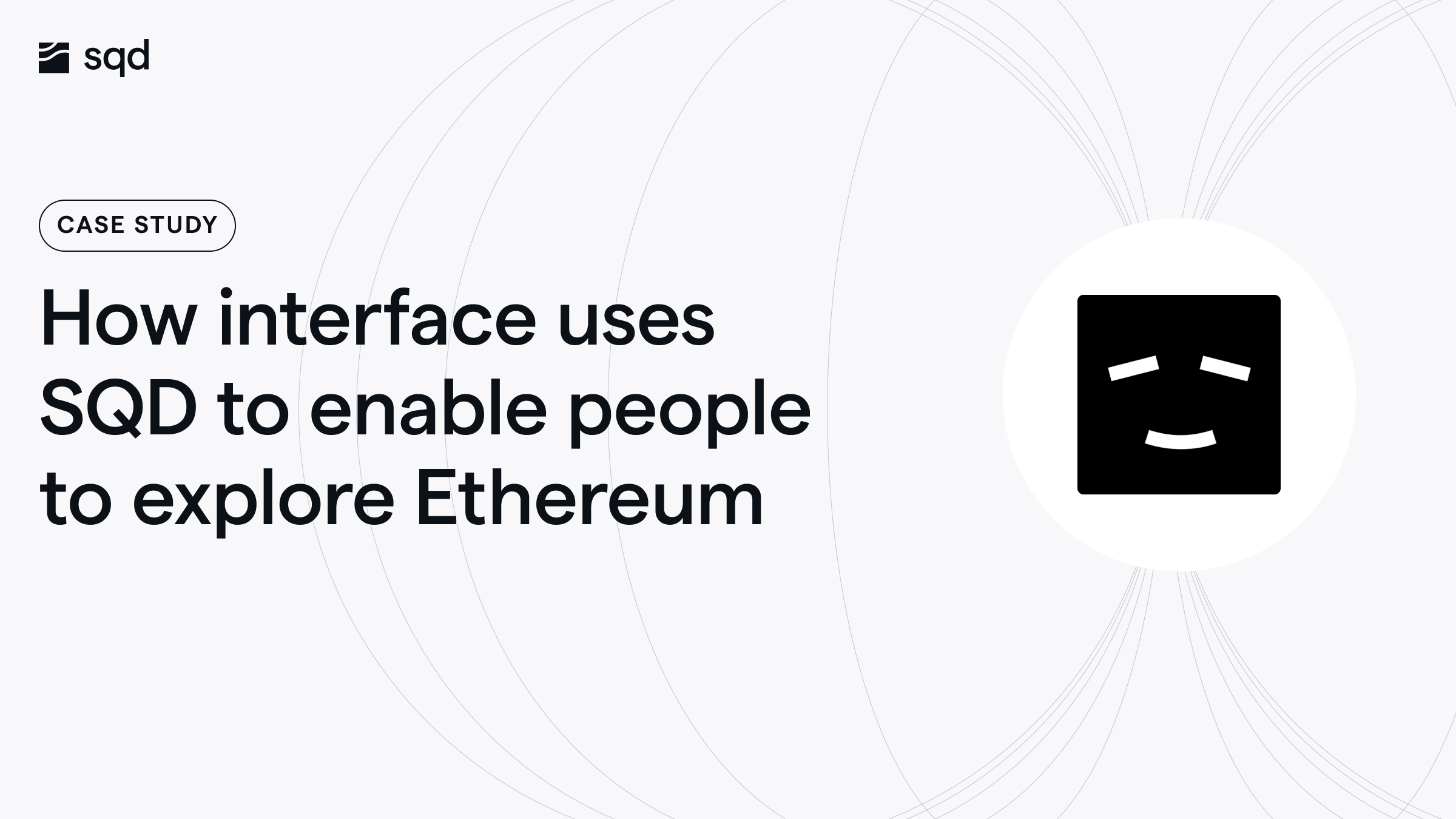How interface uses SQD to enable people to explore Ethereum

Quick description of Interface: Interface is how you can explore and interact with Ethereum. It’s a social app allowing users to understand what’s happening onchain.
Chains indexed: Ethereum, Optimism, Base, Blast, Zora
Make or break feature: Multichain indexing
Using SQD for: Indexing what users do, including powering functionalities like crypto media
Only possible with SQD: quick, multichain indexing without worrying about reorgs and data reliability.
How Interface is using SQD so people can explore Ethereum
Interface is a social app that provides users with an easy way to explore Ethereum and interact with onchain experiences. Users can follow their friends and other crypto enthusiasts to be notified whenever they do something onchain, from minting NFTs to swapping coins or extending their ENS for another year.
“Discover new opportunities, get notified when friends do something fun, be early, and make profits.”
Obviously, creating a holistic overview of all the things that happen on the subset of chains interface users are interested in poses a challenge. With the rapid growth of new chains and protocols, there is much more data to index and label.
“It is a tremendous task to understand and surface the essence of a transaction in a way that is comprehensible to users while also providing all the necessary details for them to decide if they want to perform a similar action.”
What further makes running interface more complex is that each activity needs to quickly be evaluated on whether it’s significant and urgent enough to send users a push notification about it. They also need to be opinionated about which activities have no financial or social value and are, therefore, not worth a user’s attention.
While that is an off-chain problem the team is solving, they need quick access to all the data on what people are doing on Ethereum to do so.
Initially, interface built their own custom indexers, using go-ethereum to listen to new blocks and set up a data pipeline to index from, including information such as transactions, contracts, transfers, NFTs, etc. Still, it created a lot of overhead, which was solved by integrating with SQD.
The team highlights that it was very easy to spin up “ABI-specific indexers, enabling us to focus on the core business logic of our codebase and tailor it to our specific needs.”
Other features that ultimately convinced interface to switch were batch processing as well as the availability of archives to make things move faster.
On top of that, their devs commented, “Multichain indexing is super easy to set up, just a few lines of code.”
Internally, interface also uses SQD for analytics to identify what they should focus on.
On working with the SQD team.
Interface is looking forward to continue working together. They share that:
“Working with Subsquid has been great! The team is incredibly supportive and quick to respond to any questions or requests we have. Happy to continue working together!”
To start using the interface app, go here: https://interface.social/use
For more insights on how projects use SQD, check out other success stories as featured on sqd.dev